Mariam Naficy: Founder & CEO of Minted
Episode 230
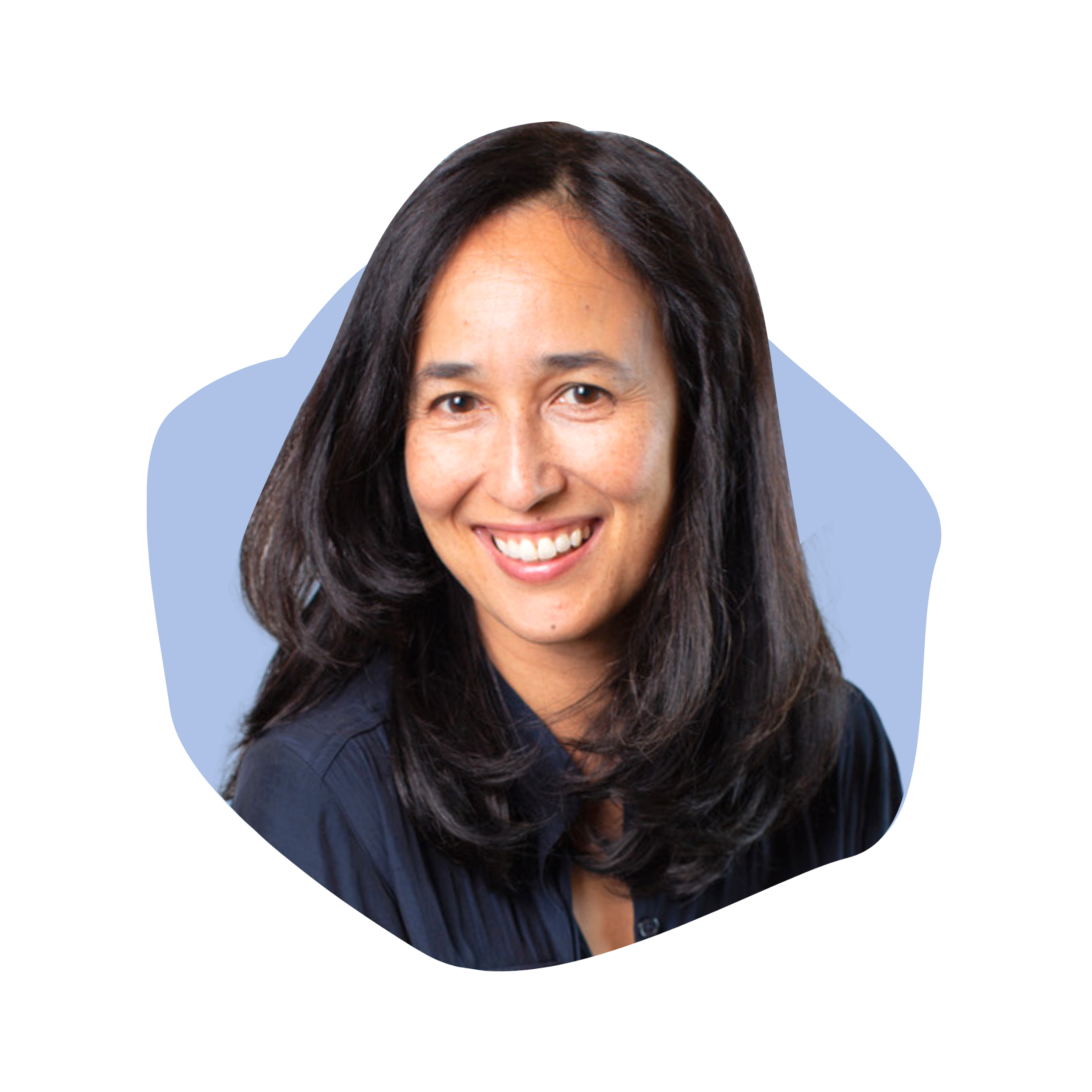
How do you build a scalable business crowdsourcing from artists from all over the world? Listen as serial entrepreneur Mariam Naficy, Founder and CEO of Minted, shares just how crowdsourcing can turn a greeting and holiday card business into a platform for art, home and so much more. And what does she think about Web3? Find out now on her incredible interview on this episode of #TheKaraGoldinShow
Resources from
this episode:
Enjoying this episode of #TheKaraGoldinShow? Let Kara know by clicking on the links below and sending her a quick shout-out on social!
Follow Kara on LinkedIn – Instagram – X – Facebook – TikTok – YouTube – Threads
Have a question for Kara about one of our episodes? Reach out to Kara directly at [email protected]
More links from this episode
Transcript
Kara Goldin 0:00
I am unwilling to give up that I will start over from scratch as many times as it takes to get where I want to be, I want to just make sure you will get knocked down. But just make sure you don’t get knocked down knocked out. So your only choice should be go focus on what you can control control control. Hi, everyone and welcome to the Kara Goldin show, though, join me each week for inspiring conversations with some of the world’s greatest leaders. We’ll talk with founders, entrepreneurs, CEOs, and really some of the most interesting people of our time. Can’t wait to get started. Let’s go. Let’s go. Hi, everyone. It’s Kara Goldin from the Kara Goldin show. And I’m so excited to have my next guest here. She is a friend. And she’s the founder and CO CEO of one of my favorite Bay Area companies called minted Miriam Naficy. And she is like I said, this incredible, incredible leader who started this company minted around actually a couple of years after the company, I founded hint. And so we’ve been crossing in a lot of different circles together. And we were both just talking about YPO as well. And she’s just absolutely amazing. So prior to starting, minted, Miriam, we’re going to get you to talk a little bit more about this. But you had actually started another company called Eve. And you sold that company I read before you were 30 years old, I mean, just an absolutely incredible. And we’re going to talk a little bit more about how minted has over 15,000 artists as part of its platform. And definitely really excited to hear that you’ve got it based in over 100 countries, from where all of these artists are, and all of the stuff that you’re doing with different partnerships where I just have absolutely loved watching minted grow to where it is today. So welcome, Miriam,
Mariam Naficy 2:13
thank you. So great to be here.
Kara Goldin 2:16
Thank you. So you and I were both part of the San Francisco Business Times dinner that we got to go to for Bay Area with the actually bear Bay Area leaders. So most inspiring leaders. At the end of last year, we got to sit down and actually have a little bit of dinner with our husbands and children, which was really, really nice. So I got to also meet your parents and I love so tell me and tell everybody a little bit about your interesting childhood growing up.
Mariam Naficy 2:50
Sure, sure. Yeah, I have great parents and very lucky. My mom was born in Shanghai and my dad was born in Tehran, Iran, and they met at Georgetown undergrad. So they’re like a, we’re a Made in America combo. Because everybody asks how on earth do these two people meet? And of course, it’s the US. Everybody meets I guess. And so we, we went overseas and I grew up overseas, because my dad was a development economist specializing in agricultural development, really trying to help bring farming techniques to farmers all over the world. He’s very much a guy made from the 60s cut from the 60s cloth really wanting to improve our world. And so we went all over Kuwait, Lebanon, Tanzania, and then eventually Iran. Actually, we were there during the revolution, and left right after the revolution. Wow. And then Egypt, we were in Egypt until I was in through ninth grade. And I finally came back to the US. We were always in American schools overseas. But I got to meet some really interesting people. As you can imagine, it was really international. It’s kind of an international melting pot. And you know, I would meet Americans from every part of the US in the American schools. So my best friends in Egypt were from military bases all over the US, like from North Dakota to South Carolina, everywhere, Texas, and I also met Egyptians in my school. So it was like a really fascinating, it was a very fascinating way to grow up. And I saw a lot of, I saw everything from, you know, the local poverty to, you know, social dynamics to, and I think where I came away with was the, there are a lot of commonalities between people in terms of their driving forces, really is, I guess, my big one of my biggest takeaways is that you could read people’s body language after a while if even he didn’t understand the language. I would get used to watching people and trying to understand what was going on. And I had to really be I think one other thing I learned was how to how to fit in no matter who I was talking to or where I was. So it’s a kind of a bit of a chameleon training
Kara Goldin 4:58
well and being able to Read people and definitely great training to becoming an entrepreneur and understanding your consumer understanding, being able to be a leader and hire people hire a great team, but also manage a great team. So which you’ve been so inspiring. Watching you do that, all of that. So where do you think this entrepreneurship bug came from?
Mariam Naficy 5:25
Well, honestly, I didn’t really realize I could be an entrepreneur until after I landed in the Bay Area after college, I nobody in my family was in business at all. I didn’t even think about businesses and occupation. Because my dad was an economist, my mom was a writer. And when I got to the Bay Area in 1993, following a boyfriend out here, who became my husband, I got here and realized what was happening and fell in love with the consumer internet as a user. So I pulled up my AOL, like got my AOL dial up account, I went to Amazon. And I thought, this is the absolute coolest thing that I can click on these links and buy books and have them shipped to me, I just really fell in love with, with that, first, the technology, the experience of E commerce first. And then I’d also just seen a lot of companies through banking and consulting as because they were my clients. That was what I did after school. And I realized that I thought it might be not in my personality to work for a long time working my way up the corporate ladder, I thought that perhaps I wouldn’t be given response, the responsibilities that I thought perhaps I could take on earlier, I, it would be a long road to getting responsibility. And there was an element of me that thought, you know, maybe as a woman, and maybe as a minority woman, that it would might be a bit more difficult in corporate America to to work my way up that ladder. If I were an entrepreneur, it’s a little bit more anonymous, I thought I could create a product. And if they liked, if people liked it, they would just buy it, they probably wouldn’t care too much about who was behind the scenes. So I thought that it would maybe be more meritocratic to start a company. And if I was succeeded, I succeeded. If I didn’t, I didn’t, it was all on me. You know. So that’s kind of where the, how the thought, how my thinking was going at the time.
Kara Goldin 7:13
So your first entrepreneurial, where you hung your shingle and really talk to us about that first company?
Mariam Naficy 7:21
Yeah, so the first company, I was a second year student at the business school. And I decided not to interview with any companies for a job upon graduation. And I had this friend who had worked in who had been my roommate in New York when we were both working in investment banking in New York. And I really loved this friend Varsha, she was smart, she had really high work ethic. I thought this is the person I really want to start a company with. But she’s at McKinsey now. And married in New York. So now I’ve got to convince her to leave her husband behind leave McKinsey leave New York and come to California. So I had my first job as an entrepreneur was to call her up and say, Let’s start a company together. There’s a lot of funding available. There’s tons of funding available. We’ve got to do something in in the space and in the internet. And she she said okay, but only if we do this company I like which is this cosmetics company online. So I said, Fine. That’s great. Let’s do the let’s do your work. Let’s, let’s follow your idea. Because I don’t really care. It’s okay. Like, I want to pick the bone to pick the person I want to work with. And this cosmetics idea looks good enough. I maybe I use cosmetics, maybe I can figure this out. And so we were really pretty young. But we raised $26 million to start this company called eve.com, which was the first cosmetics company online. And we had to go convince like Chanel and huge, like luxury brands to take their goods and put them on the internet for the very first time. And they would they you know, we’d go into these meetings and they would say, you know, are you guys gray market like, you know, you’re going to sell off the biggest fear of luxury brands is that you’re going to sell their goods off the back of a truck. So you had to really sell to were like, you know, 26 basically trying to sell big luxury brands on moving on to the internet for the first time. That was my first experience. And we ended up selling the company. About two weeks before the NASDAQ plunged we sold the company for cash. Like literally in April 2000. We closed the deal. And two weeks later, the whole market fell apart and started just imploding. That’s my story. Amazing. So that’s what happened. That’s
Kara Goldin 9:27
incredible. What do you think was the biggest lesson you learned in building that first company that you still think about today? And building your company?
Mariam Naficy 9:37
One of the things that I really remember is that we started and then venture capital firms back five more competitors to launch into the business right after us. And so we had a ton of competition and most people would think, jeez, this is really difficult. You know, like, I felt like at the end of the day, if we kept our focus really kept our heads down, we could meet to lead and to not get too distracted, looking over our shoulder at the competitors, that was one big lesson is not to constantly be looking at your competitors. But really thinking about focusing on your own business, it’s healthy to look and understand the competition, but to become obsessed with it, and always look over your shoulder or always start to sort of move in their direction is not I think, is not healthy. So we were able to get ahead actually, even though we had a very slim lead, we built it to like 10 million in the first year in sales, which was, I think, pretty good and 2 million uniques a month in 99, which was a pretty big, a pretty big number. I guess the other one I’d learned. The other lesson I learned was when we did our kind of classical five forces Michael Porter analysis like is this a good business to start or not? One of the big problems was that it looks pretty concentrated Estee Lauder companies owned over 50% of the cosmetics market. And if you follow the rules of the Michael Porter analysis, he’d say, don’t start this business. It’s a bad business, because like there’s too much concentration on the supply side. Well, we went forward anyway. And I was nervous about it. But it turned out that there were all these little cosmetics brands like lush or or Nars, or benefit that really needed distribution, and we’re getting shut out of the department store. So the department store sales were not really reflective of what could have been. So it’s almost that the data was wrong, you know that. Once you put all these little brands on the internet, they started selling like crazy. Yeah. And
Kara Goldin 11:31
actually, if you couldn’t get a counter space at Macy’s, you were not that big, right? I mean, that was great.
Mariam Naficy 11:38
And you had to pay a lot of money for that counter space. So as a little brand, it was really hard to break in. So of course, their sales weren’t reflected because they weren’t able to sell through the channel, you know, the channel was blocking them. So it turned out the big one of the big lessons there is like what looks small in the real world, if you aggregate all of the demand online for something that is quote unquote, small, you actually can build a pretty nice, a bit pretty big business on the internet, something that looks small can actually be pretty big. minted was like that, too. And then which we can talk about, but yeah, so that was another that was another big lesson.
Kara Goldin 12:10
Yeah. So after selling Eve, you went on to create minted and so how did like how was this more in line with kind of what you were most interested in? And obviously really focused on the, you know, the crowdsource design marketplace concept, which I can only imagine you trying to get people to really understand it. I mean, I you know, you talk about a visionary entrepreneur, and I just, I thought a lot about that whole concept when I was doing some research on you. And I just thought, wow, I mean, can you imagine, like you walking into this first meeting, say, okay, crowdsource and they’re like, why?
Mariam Naficy 12:56
Yeah, it was very difficult, especially because I was crowdsourcing design for stationary products and talking to male investors. You know, it was very, it was very, you know, and I was, I was saying, no, no, the design really could be and should be a lot better. But there’s, it’s very hard to quantify that right to it financially minded investor, what does that mean? The design needs to be better. It’s very hard to explain that. You know, it’s very hard to actually explain what better design looks like when you’re talking. You have to show people so you could picture the challenges picturing it in my head, but not being able to explain it to people so it was significantly harder to raise capital for minted than it had been for Eve. Eve was a very simple concept. You stick all the makeup in a warehouse, and you just ship it, right. And even then people were like, no one’s gonna buy cosmetics online, marry him, you know, like, it’s just not going to happen. People need to try it on. It’s not happening. This is a bad idea. With minted it was I don’t understand this crowdsourcing thing. What is this design competition and stationery, no one’s gonna buy that online, either. So it was it was very, very, it was a I think it would be I would call it an uphill battle to raise capital for minted at the beginning. But also we were we raised right before the recession. I think like maybe four weeks afterwards, Lehman Brothers failed right after we raised our first round. So we had to make that money work for a long, long time. But the there with minted, I was just captivated with, I mean, I do love great design. And I was one of those people would go into a stationery store and touch the paper all the time, like the really nice cotton cottony paper with a letterpress, like really beautiful imprint. So it’s a little bit of a paper nerd to begin with, then, so that I think it was fundamentally more interesting to me that I could empower talent, potentially that was hidden out there all over the world. Like my mom’s side of the family are all graphic designers and artists and I was thinking about them, you know, like my experiences talking to them about what what their experiences have been like and Fundamentally was more interested in that than in cosmetics, for example, you cosmetics was great, but this was a chance to really, you know, find your path people yeah and follow my passion, exactly. My passion for design and for working with creative people that I really enjoy working with creative people and helping them navigate the world of business, I guess is something I enjoy.
Kara Goldin 15:24
So interesting. So I read somewhere that you mentioned that the intersection of the rise of social media and the recession created the perfect window to start minted. So what do you think about today? You know, there’s web 3.0 is such a buzzy topic. I mean, do you think we’re seeing these windows right now that are forming that are kind of the perfect storm to go and start new businesses? And you know, I’d love to kind of hear your perspective.
Mariam Naficy 15:57
Yeah. So someone who served the web, the wave of web one, and then web two, web one was eve.com, web two was minted. And web three for me is a venture studio that I’ve just started called heretic ventures, that I’m running on the side of, of minted. And that is 100%, focused on the Creator economy with a strong tie to foundation and web three, meaning, the ideas of decentralization, the idea that decision making will become more and more decentralized. The idea of equity and fairness for artists and creators of all kinds. The idea that, for example, we all we all search on Google right now, right? If we search on Google, that turns into data that actually accrues to Google, right? That that that becomes data that Google Google can use, it’s not something that we are paid for, as for our search, you know, for searching, or let’s say you post an image on on Instagram to share with your friends, there is something you’re doing there that is creating, you’re creating, but you’re not necessarily. So that so the so the argument goes in web three, this is the argument that the platform’s are taking, and they’re they’re getting a lot of information about you, and they’re growing, but the people contributing are not actually earning. So that’s the one of the big, you know, rubs that people have and where were the web three, we know web three culture is going is sort of decentralization, disintermediation of these platforms, direct ownership, connection of creators with their consumers, their fan bases directly to earn money. And then crypto or let’s say, you’ve heard everyone talks about NF T’s. Well, what’s the big benefit of benefit of an NF t? Well, I sort of see it as a way to create ownership in things like music or in writing, or in any kind of create any kind of creative content product that can then be fractionalized, or shared between people and can create a a payment system or ownership structure that charges up or turbocharges any community because you can imagine if you can imagine if shoppers on and buyers on a market on a on a current marketplace, we’re actually rewarded over time by buying and selling on a platform that they actually earn a little bit of the company. Well, NF T’s and all that stuff that has arisen around the blockchain gives companies a chance to actually give give away bits of ownership to anyone who participates in the community, thereby hopefully giving, you know, turbocharging the activity in that community because you have a whole incentive structure you can build. So that is to me, very exciting. And so that’s why I’ve got this happening and web three.
Kara Goldin 18:50
And so what are you doing with this company then?
Mariam Naficy 18:53
So this is a company that produces companies. So we have a venture studio, where we have awesome, where we are circling around certain themes and launching companies with CEOs out of the studio. So we are, we are hiring into the studio right now. So please check us out heretic dot ventures. But we, we, we are going to be a core team at the studio that puts puts businesses out finds a CEO for those businesses and then launches them and then they the we will see those businesses with some starting capital and then of course, those businesses graduate, and then they have their own lives. So it’s a lot of babies flying the nest, let’s put it that a lot of like baby companies find the nest, which is what I enjoyed the zero to one phase,
Kara Goldin 19:39
and that’s what I was just gonna say so is that I always talk to entrepreneurs about kind of what is the phase that they really liked the most you love that early, early stage. I mean, I think you’ve definitely proven that you can do more than that and grow companies but I also like the really early so Stage and the creating in the building I view you definitely as an incredible builder, would you agree that that’s your favorite? Yeah, I
Mariam Naficy 20:07
like this I like this like looking at this blank sheet of paper and, and thinking of something new and really figuring out how to design it in a way that it has the best DNA so that it it’s a really self propelling self perpetuating vehicle. So I, I really like the company, business model design phase, and then breaking it through into getting some traction for the business. It is really a scary part of business, I would say sometimes you like you really have to combat your fear all the time. It’s something where you have to talk yourself into a state of like, calm a lot. It’s just it’s just one, it’s scary. And also fun. It’s fun, because small teams, small groups of people, very, very curated groups of people you get to work with because it’s like, you know, you’re not managing teams of 1000, you’re you’re cherry picking a couple people to start with. And that’s really fun. And of course, you get to redesign from a nice clean slate, which is beautiful. On the other hand, it can be very scary, right? Because you’re not sure if it’s gonna work. You’re trying to sell people on this crazy, crazy dream selling cosmetics online. Some of the nuts, you know, insanely. Crowdsourcing sounded nuts. So I just have to keep reminding myself everything I think I’ve done so far, people have said, it’s just not gonna work. Yeah, you know,
Kara Goldin 21:25
but but then it does. So I love that. That’s great. So just one. Well, actually two more quick questions on on minted so you expanded from stationery to home decor, you had an art and art? And so when do you decide to do that? When do you decide to go into new categories? And for any founders who are out there starting to think about expansion? I mean, like, how do you make those decisions? Yeah, that’s
Mariam Naficy 21:57
it’s a great question. Because I think we could have gone into stick stuff with stationary and built a certain size business within the stationary total addressable market. And that size of business might be, let’s say, a $10 billion market in the US. And then we could build it to a certain size and sell it for a certain amount, or there was a fork in the road that said, we can go raise more capital, we’ve realized that the community is actually not stationary designers that we form, they’re all kinds of people in the community, that are actually have day jobs that are not creative. And on top of that, there are artists, so what we’ve done is actually build a community that could be pointed at different things, we’re going to go raise venture capital, and then what we’ve got to do is create a broader design marketplace, and go for a bigger tam total addressable market, and a different outsize outcome. So I think it’s right sizing the capital you took into the kind of outcome, you’re like the exit value you’re trying to sell the company for, or take it public. And I guess I would say to your listeners, like if you’re like, it really is about thinking about how much capital you want to raise, and what and whether that makes sense in light of the total market and what your exit opportunity might be in terms of the value of the business. And that’s kind of the decision we faced. And we decided to take the fork in the road, that was the let’s go into a bigger, broader design marketplace, and leverage the talents of all these people in different ways and build a bigger community.
Kara Goldin 23:27
So tell me a story in building, building mented, where you faced a huge challenge, something that was super unexpected, or there was a big loss, and what lessons did you learn and take away from?
Mariam Naficy 23:45
Okay, so the one that really jumps out is that a big company wanted to buy us. And so what they decided to do was a surprise attack. And by 100%, by the printer that served us, the did half of our volume, and to tell us that about two weeks before the Christmas season, and then forced us to sell. And so they called me the CEO called me on my cell phone said, hey, you know, I really want you to see this. You don’t need to see the news first, but we bought X printer. And the news is coming out tomorrow. And they and he knew full well, of course that it was 50 that they served us that they did more than 50% of our volume. And it was October, you know, and you can’t in this business, go sign up a printer and integrate do the API integration very well and scale for the holidays with quality and precision. Because we’re a make on demand. Business at peak. It’s very difficult actually. It’s hard to do that right before the holiday season. Even if people want your business. They don’t want you to do that in October. And so that was rough. And so then it turned out when I went in to talk to him that he was like I want to I want to buy this business. And I had to bluff a little bit and run around, try to find another printer really fast and integrate and, and sure enough, they pulled the rug out from under us after if they figured out that we were looking for another printer. And we were just out on the street cold like after, you know, with like, it was really
Kara Goldin 25:22
bad. But it’s a lesson of always having options, though to
Mariam Naficy 25:25
absolutely. So first, you have to like make sure that you don’t have a single point of failure, even like that 5050 was too high was left as vulnerable for attack, we had to be more spread out in terms of our printer base, who knew that people would want to buy the company so badly that they would do something like that. I mean, it was just we hadn’t conceived of that. But it can happen listeners out there, it can happen to you. So I would say you know, protecting yourself from attack like that. And then just, I guess I would say, we just weren’t ready to sell, we felt like we had more growth, we we have had much, much more growth since that moment. And we had conviction. So we stuck with our conviction. And we and we decided not to panic. And we you know, we all push through it together my great, great, great engineering team and fulfillment team pulled together and they still call it printer gettin at the company. And there’s some of the some of the people are still there after this is like eight years later, people are still there. So they still talk about printer again. But I would say just like pushing through a really bad competitive attack. And I guess I am a little bit as a result of it interested sometimes in antitrust because I feel like a big company should not be able to like crush little little upstarts like us like that suddenly. So it has made me more interested in that in that area
Kara Goldin 26:51
super interested. Yet this happened in the beverage industry. I remember one of the coconut water companies had a very similar situation where somebody went and bought up all the coconut farms in this one area that they were supplying frog and then we didn’t have any coconut water. So it wasn’t our issue. But I remember watching this whole thing happen and really thinking about the antitrust aspect of it and and how you can how can you how can you stop it in another country as well. I mean, that’s a whole other that’s really tough topic. So well, that is amazing, amazing advice and a great story to learn from so tell me and the listeners how we can follow you and all your progress.
Mariam Naficy 27:38
Sure, I’m reachable at on Instagram, you can find me on Instagram and Twitter at M FEC just my first initial last name. And you can also see go to mint.com or heretic dot ventures.
Kara Goldin 27:51
Very, very cool. Well, we’ll have all of that in the notes as well. But thank you so much, Miriam, for taking the time to sit down with us. And you’re such an incredible example of a great founder, a great entrepreneur, a great CEO and leader. So I really appreciate everything that you’ve shared with us today. And thanks, everybody for listening to this episode, please subscribe to the Kara Goldin show so that you get to hear amazing people like Miriam and please be sure to send in those five star ratings. It really really makes a difference in the algorithm and find me on all social channels at Kara Goldin don’t forget to pick up a copy of my book undaunted if you have not had a chance to read it, and we’re here every Monday and Wednesday. Thanks, everybody for listening. Have an excellent rest of the week. And thanks again, Miriam for your time.
Mariam Naficy 28:45
Thanks for having me.
Kara Goldin 28:47
Before we sign off, I want to talk to you about fear. People like to talk about fearless leaders. But achieving big goals isn’t about fearlessness. Successful leaders recognize their fears and decide to deal with them head on in order to move forward. This is where my new book undaunted comes in. This book is designed for anyone who wants to succeed in the face of fear, overcome doubts and live a little undaunted. Order your copy today at undaunted, the book calm and learn how to look your doubts and doubters in the eye and achieve your dreams. For a limited time. You’ll also receive a free case of hint water. Do you have a question for me or want to nominate an innovator to spotlight send me a tweet at Kara Goldin and let me know. And if you liked what you heard, please leave me a review on Apple podcasts. You can also follow along with me on Facebook, Instagram, Twitter and LinkedIn at Kara Goldin. Thanks for listening
People Also Liked
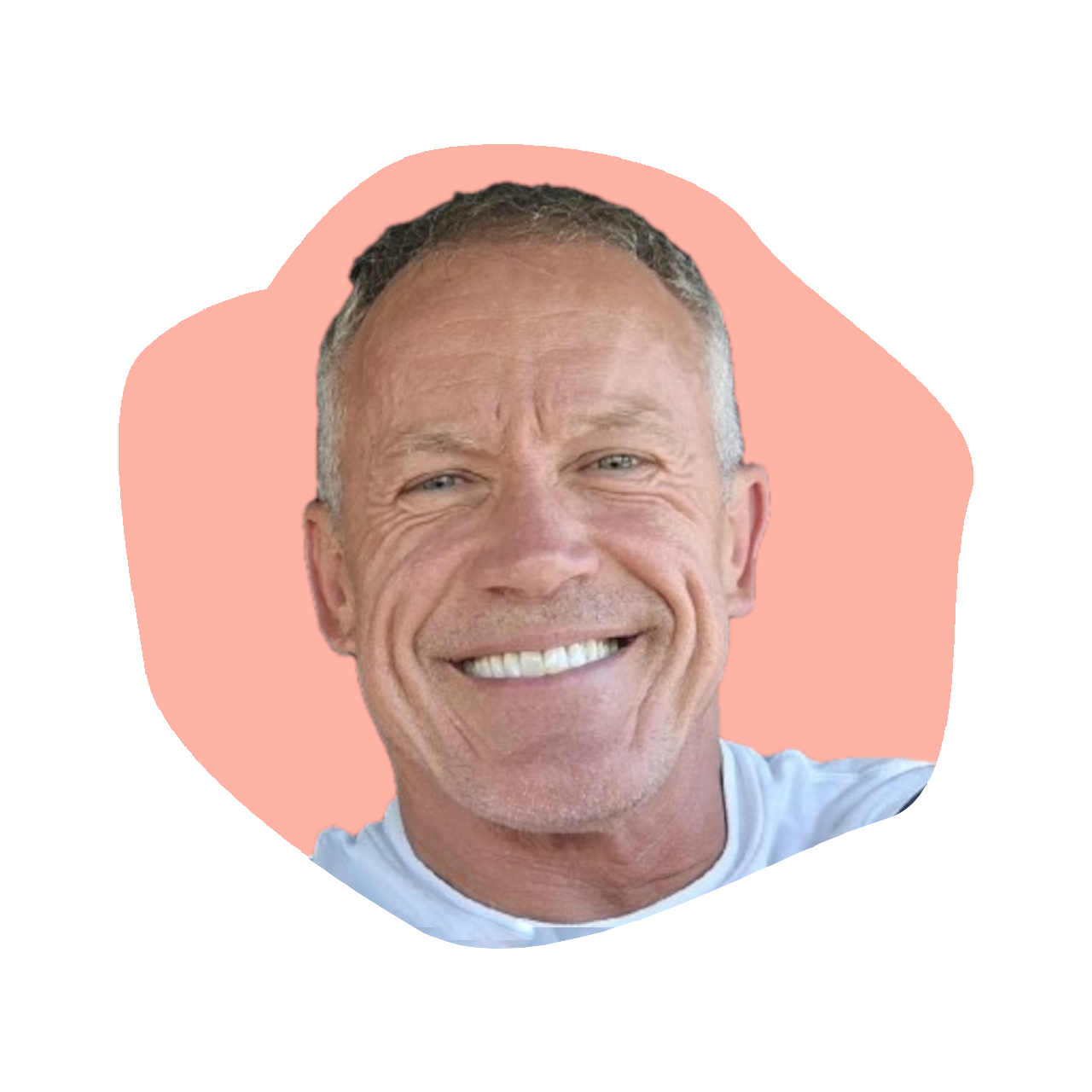
708
Jeff Shardell: Founder & CEO of Humble Brands
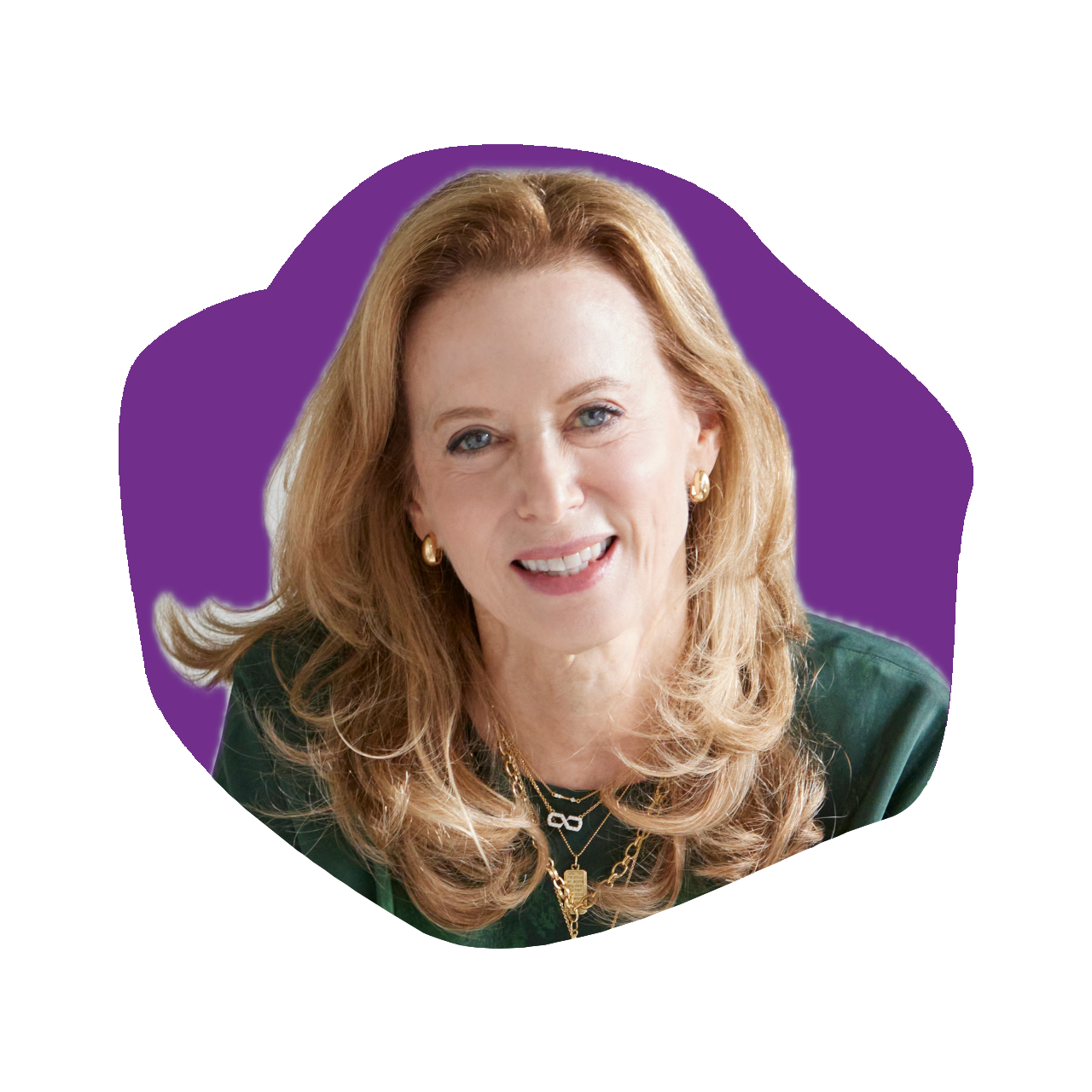
707
Monica Rich Kosann: Founder & Chief Creative Officer of Monica Rich Kosann
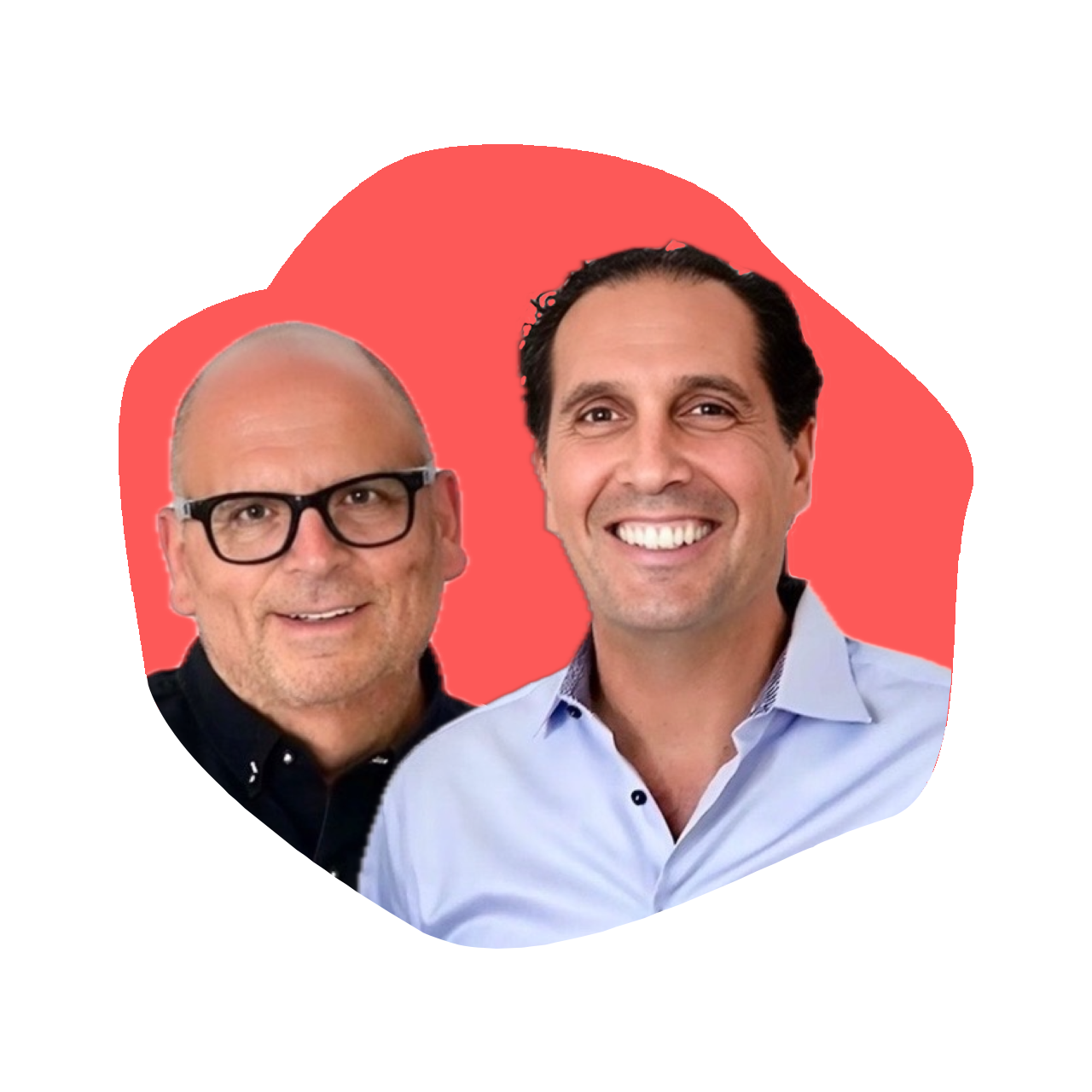
706
David Wolfe & Jamie Diamonstein: Co-Founders of Tiami
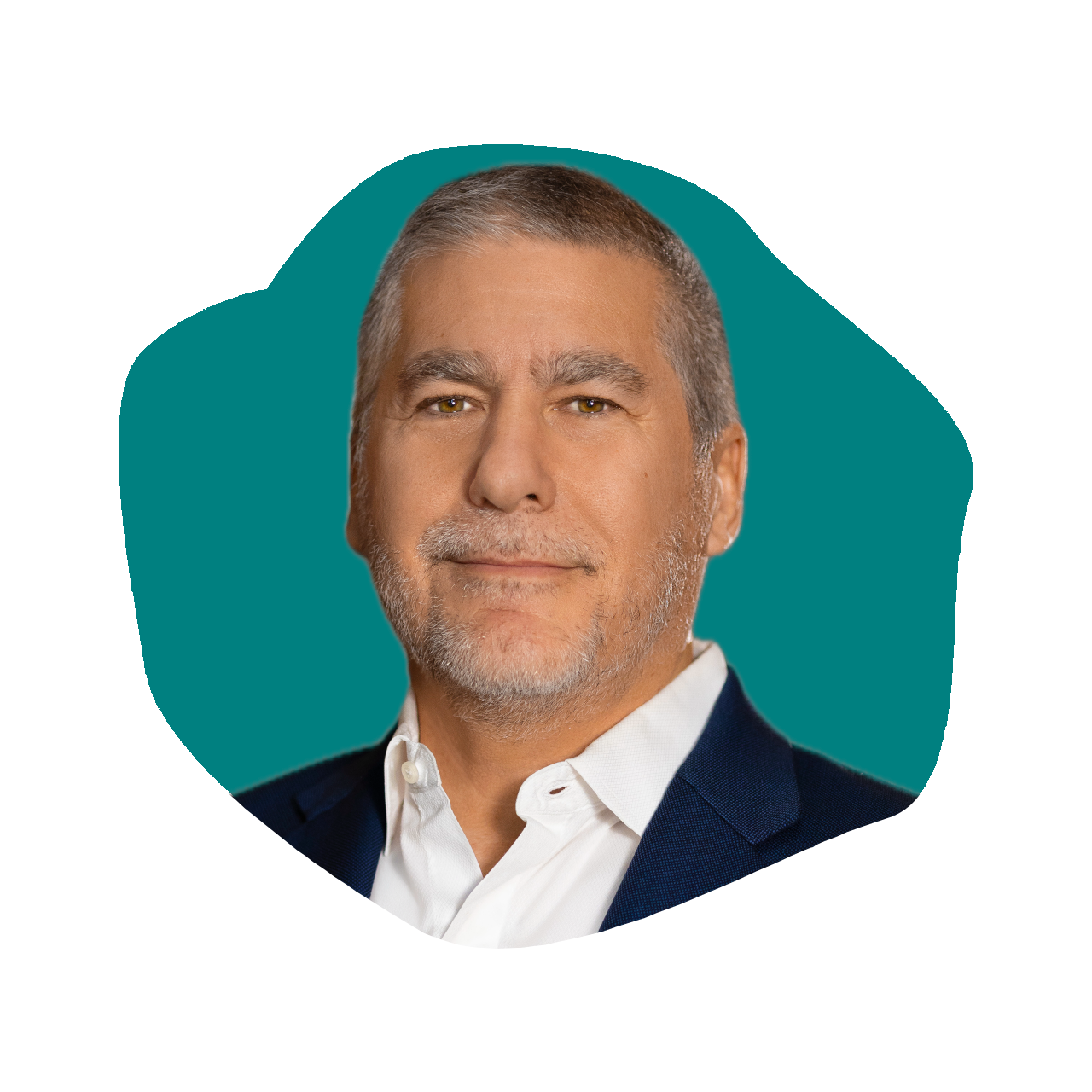
705
Jeff Mahony: CEO of NEFT Vodka
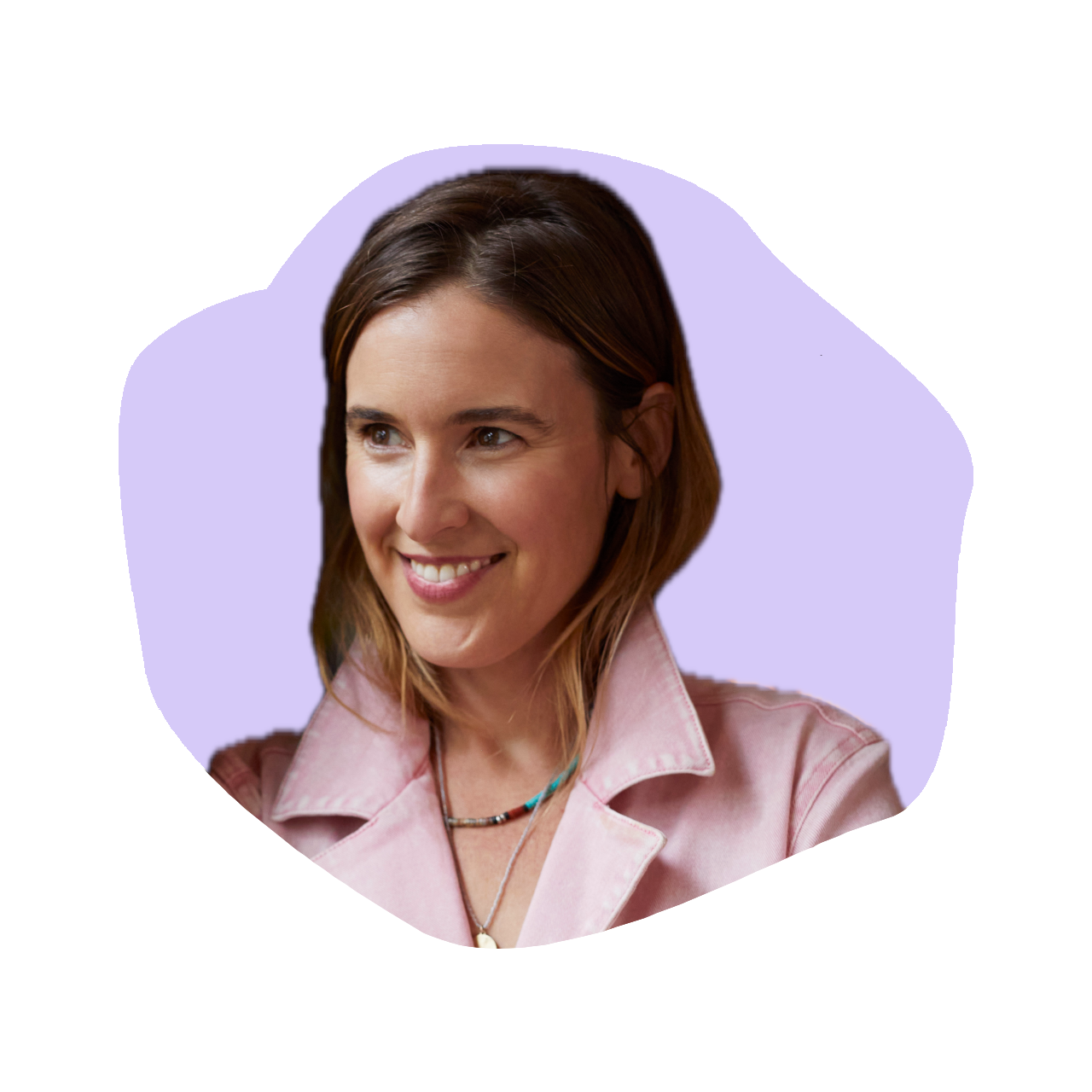
704
Kerry Docherty: Co-Founder & Chief Impact Officer of Faherty




